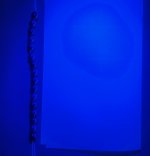I've recently started looking into pearls (having spent years collecting gem and mineral specimens). UV fluorescence is one of the tools I use to identify gem characteristics. Since I quite like unheated, untreated gems I've learned a lot about treatments and how to detect them. I was wondering how useful UV characteristics would be to various pearls and the above video is helpful.
I ran across this article, which has quite a bit of information on the topic:
https://www.gia.edu/gems-gemology/s...ightening-in-chinese-freshwater-edison-pearls
I found this article fascinating on a number of levels. Looking at the illustrations from the article, particularly Figs. 2 & 3 and the Results table, a number of interesting details are revealed:
1) It suggests LWUV is a very good method of determining brightening/bleaching/maeshori treatments in some pearls. I was interested to learn that some, but not all, "natural" color freshwater pearls are subjected to brightening/bleaching. I know Akoya often are brightened, hence the term "maeshori". I gather this is not particularly likely to affect the value of high quality pearls, but as a consumer I do like to know what is completely natural versus treated in any way.
2) I found it highly interesting that the definitely color treated CFWP "Edison" pearls were in colors of golden, deep/strong blue, and strong purple. With the golden ones (which could be mistaken for SSP at first glance) it would appear LWUV might be able to sort them as they have a different glow under LWUV than other pearls.
3) I found it useful to know that many "natural" pastel-colored CFWP, even ones with very strong orient, do not appear to be treated in any way.
4) Slightly off topic, but I found it interesting that Grace Company sent GIA several Edison pearls that turned out to have no nucleus but otherwise appeared to be very round and outwardly like bead-nucleated Edisons. It was also interesting that all of the non-bead cultured pearls submitted were all smaller than 9mm and GIA attributed it to the mussel rejecting the bead. I assume it would be difficult to grown very round CFWP in sizes larger than 9mm without bead nucleation. Thoughts?
My ultimate takeaways: CFWP with strong colors of yellow, blue and purple are probably color treated; lighter colors of CFWP might be brightened/bleached. LWUV is a good sorting tool for some types of pearls.
Here's my own personal test with a short strand of 10mm bead-cultured "Edison" pearls using a strong LWUV (390nm UV-A) flashlight:






 we had an internet outage in the area from midday to midnight! Yikes!
we had an internet outage in the area from midday to midnight! Yikes!